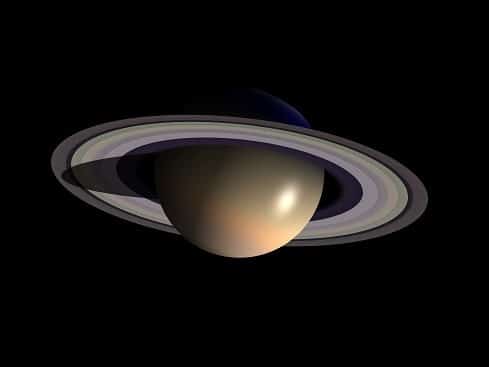
 Stargazers are in for a treat this weekend as Saturn will be at its brightest and closest to Earth, clearly visible with the naked eye and forming a triangle in the southeastern sky across Canada with Mars and the bright star Antares.
Stargazers are in for a treat this weekend as Saturn will be at its brightest and closest to Earth, clearly visible with the naked eye and forming a triangle in the southeastern sky across Canada with Mars and the bright star Antares.
On Friday, June 3rd, Saturn will reach its opposition -that point along its orbit when the Earth is directly between it and the Sun, occurring every 54 weeks- and the ringed planet will also be at its closest to Earth at 840 million miles, making it appear slightly larger than normal.
Mars, too, is currently a sight to behold, as it just passed its closest point to Earth in over a decade on May 30th. Saturn will appear a golden yellow in colour while Mars and Antares will both be reddish orange (Antares will be blinking while Mars will not). And while the rings of Saturn will be on prominent display, thanks to the current tilt of the planet in relation to Earth, viewers will need a telescope with at least 100x magnification in order to see them. For an online view of Saturn’s opposition, astronomy website Sloosh.org will be live-streaming the event. A NASA ScienceCasts video gives an animated representation of the oppositions of Mars and Saturn.
Italian astronomer Galileo Galilei was the first to view Saturn’s rings through a telescope in 1610, and NASA’s two Voyager spacecraft were the first to fly by Saturn in the early 1980s, when it was discovered that Saturn’s rings -likely formed by another body’s massive impact with Saturn far in its past- are made mostly of water ice particles.
A 2015 study of Saturn’s rings conducted by an international team of scientists including Dr. Nikolai Brilliantov from the University of Leicester concluded that the size of the ice particles within Saturn’s rings conform to a mathematically constant ratio called the law of inverse cubes.
“Saturn’s rings are relatively well studied and it is known that they consist of ice particles ranging in size from centimetres to about ten metres,” says Dr. Brilliantov. “What is surprising is that the relative abundance of particles of different sizes follows, with a high accuracy, a beautiful mathematical law.” Researchers determined, for example, that the amount of two metre-sized particles is eight times smaller than the number of one metre-sized particles and the amount of three metre-sized particles is 27 times smaller than that of the one metre-sized particles and so on.
The team further observed that this ratio is the same for all planetary rings made up of similar particles. “We have finally resolved the riddle of particle size distribution,” says Dr. Brilliantov.
NASA recently published new breathtaking photos of Saturn taken by its Cassini spacecraft, which has been on its mission to explore the planet and its moons since 1997. Currently in orbit around Saturn’s equator, Cassini successfully delivered the space probe Huygens onto the surface of Saturn’s largest moon, Titan, in 2005, making it the first landing of a space probe on a moon in the outer solar system.
Below: ScienceCasts: Red and Golden Planets at Opposition
Leave a Reply
You must be logged in to post a comment.



 Share
Share Tweet
Tweet Share
Share




Comment